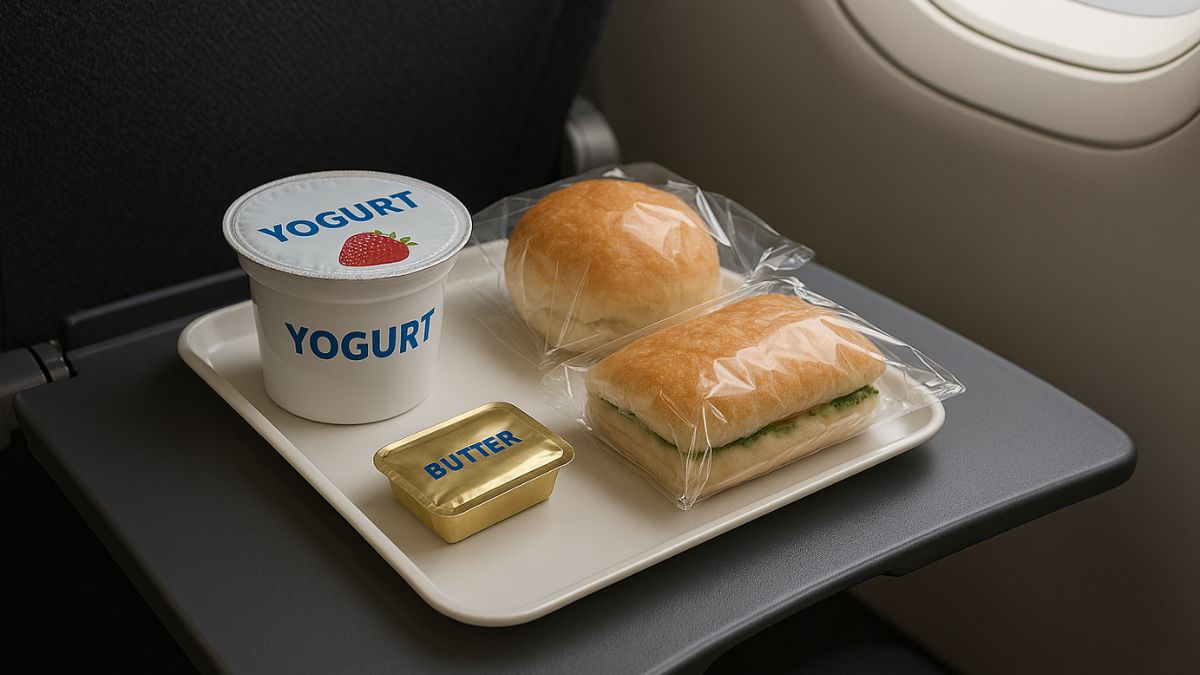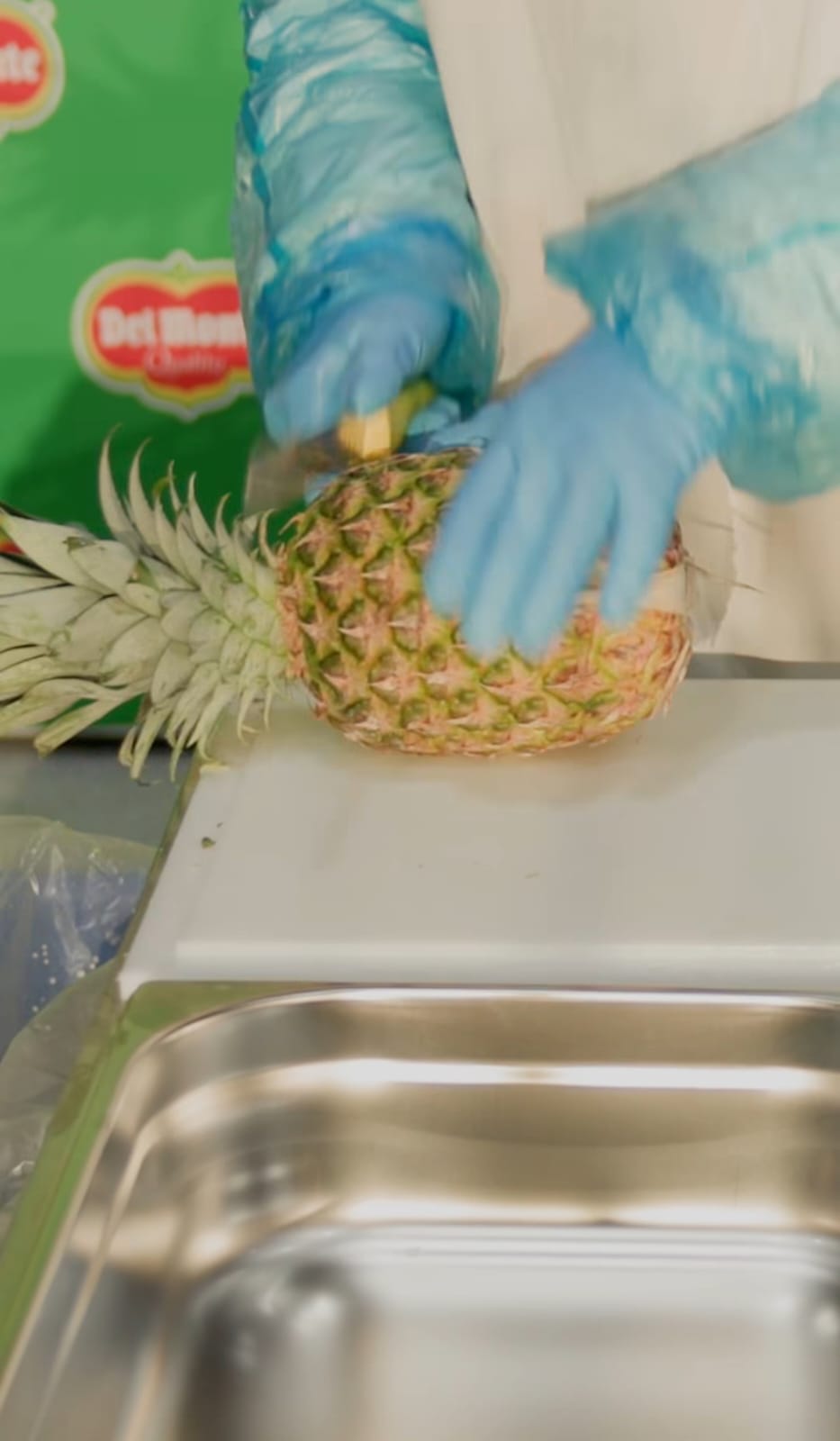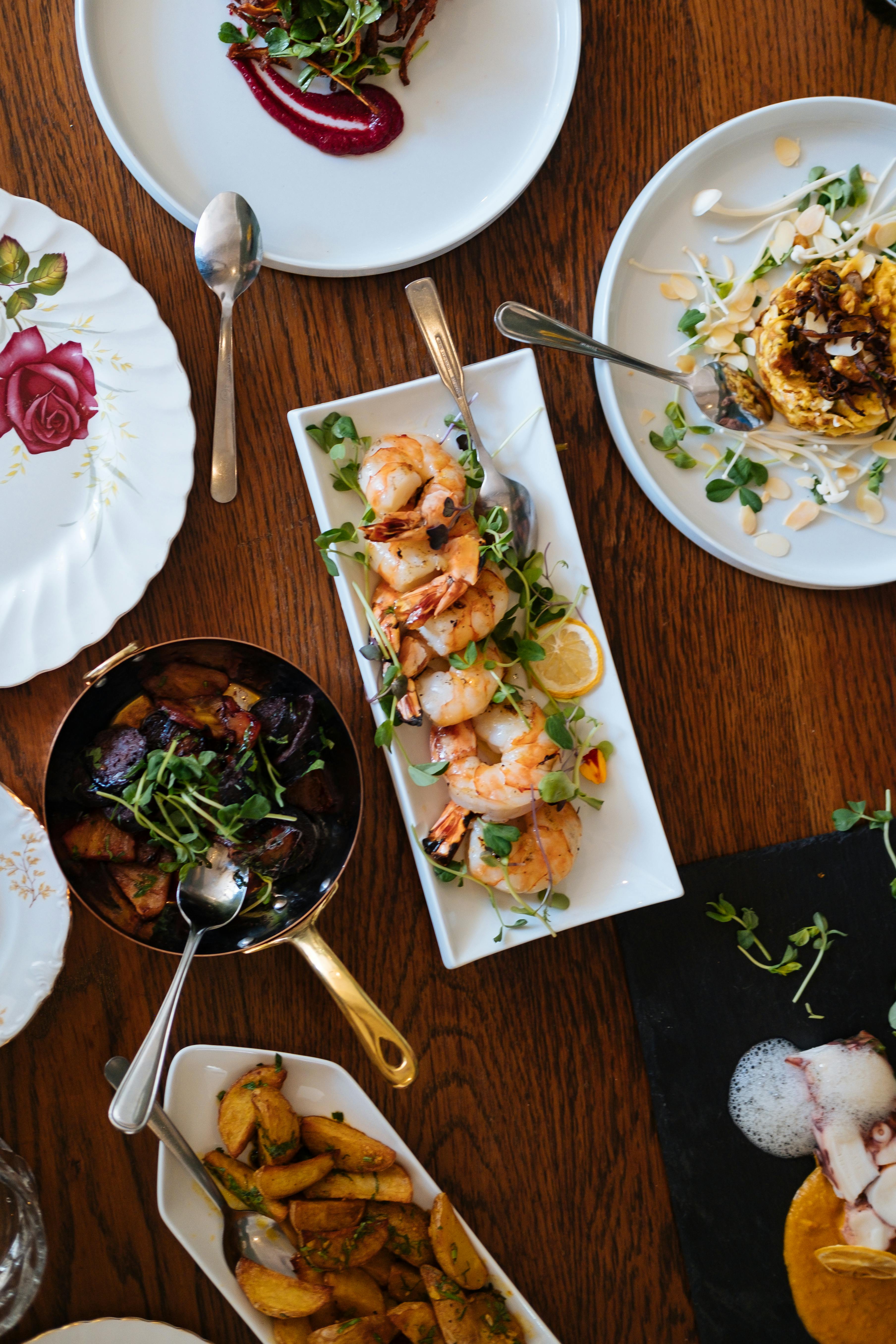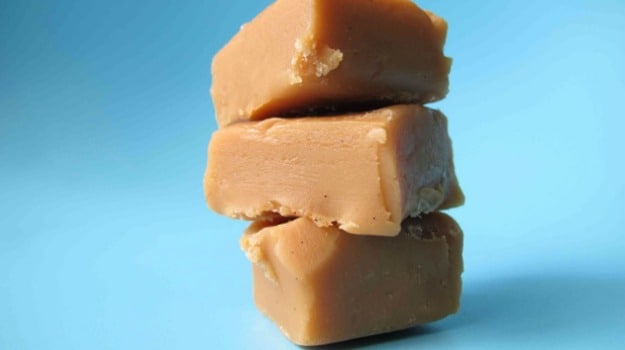Fudge is probably the first thing I cooked without supervision – in fact, had the powers that be seen us turning the school margarine and sugar supply into a molten mess, they might well have nipped our culinary experimentation in the bud.
The washing up that resulted proved a salutary lesson in the tricky business of confectionary – because, although fudge isn’t a recipe with many steps, or indeed many ingredients, as with anything involving melted sugar, it is one that demands precision, attention to detail and, ideally, an actual recipe. Chucking a load of ingredients into the pan and hoping for the best doesn’t really wash here, however hard you scrub.
Softer and crumblier than toffee, smoother and richer than its close relative, tablet, its dairy content means fudge is associated particularly with the south-west, though shops churning it out in a mind-boggling array of weird and only occasionally wonderful flavours are de rigueur in tourist honeypots throughout the British Isles. But before you can hope to achieve gingerbread latte-flavoured nirvana, you need a decent basic template. Which is where I come in.
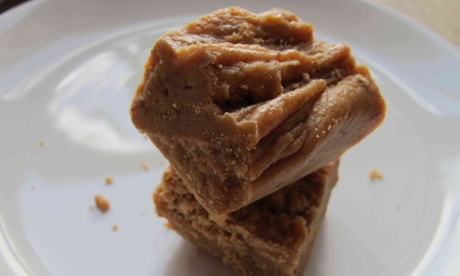
The sugar
Lest anyone was under any illusions in this department, the main ingredient of fudge is sugar – that’s why you can feel your teeth wince in protest as you reach for yet another piece. If you want to keep things simple, like candy pros Mrs Hope and Mr Greenwood, the folk from Rodda’s clotted cream and Michelin-star chef Tom Aikens, this can be caster or ordinary white granulated, but given sugar plays such a large part, the demerara suggested by the Carnation condensed milk tin or the light muscovado used by Ren Behan in Jamie magazine will give a more interesting flavour. Personally, I prefer the slightly more subtle caramel notes of the first here.
Aikens and Roddas both also add some sugar syrup – boring glucose in the former case, ambrosial golden in the latter – which makes their fudge wonderfully smooth as opposed to the slightly gritty, sandy texture of the Carnation and Hope and Greenwood recipes, which, though undoubtedly pleasing, is more reminiscent of Scottish tablet. Clearly feeling two types of sugar aren’t quite enough, Aikens finishes his fudge with an infinitesimal amount of icing sugar, for, no doubt, very sound Michelin-starred reasons which I am unable to fathom.
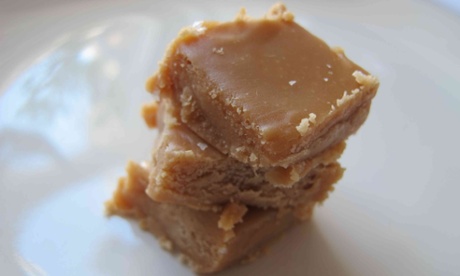
The dairy
The second, and most important, ingredient in fudge is fat. Dairy fat to be precise. Some recipes cleverly combine the two ingredients in one big hit of nauseatingly delicious condensed milk, which makes their fudge taste distinctly like white chocolate – not that there’s anything wrong with this, but it’s not the classic flavour I’m after.
Hope and Greenwood plump for the nostalgic boiled flavour of evaporated milk instead, an ingredient that has so far failed to reinvent itself for a more decadent age. Despite a weird complaint that it tastes “meaty”, I happen to like it, but not as much as the clotted cream which plays an unsurprisingly large part in the Roddas recipe, or the double variety in Aikens’s fudge.
In fact, the Roddas recipe proves pretty popular; soft, smooth and rich, it’s classic Cornish seaside stuff. My only complaint is that the flavour is a little too sweet and rich, which I admit may sound ridiculous, but in a side-by-side comparison, we preferred those recipes using butter as well. Let’s be honest, everything’s better with butter. But, as butter and clotted cream could prove a fatal combination, a downgrade to double seems just what the doctor ordered.
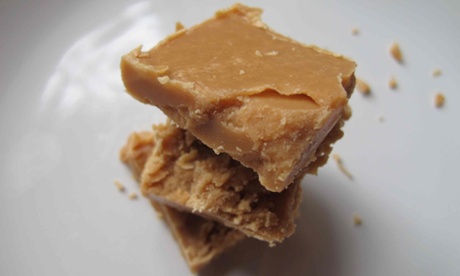
The flavouring
Though to make this a fair test I omit Hope and Greenwood’s peanut butter (anything containing peanut butter is always going to win big for me), I do allow Roddas, Behan and Aikens their vanilla. Not strictly necessary for a satisfactory result, but a lovely combination of flavours nevertheless – and this is one place where I think vanilla extract works better than those fiddly little seeds. Salt is another must – as ever, it brings out the best in the sugar, keeping it just the right side of sickly. How much you add depends on how enthusiastically you have embraced salted caramel mania over the last few years; sceptics will be content with a pinch, salt fiends like myself should up the dosage considerably. In for a penny, in for a pound.
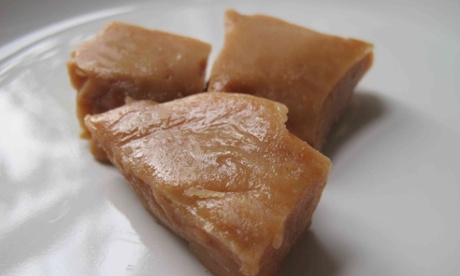
The method
All the recipes I try start in much the same way, dissolving the sugar and dairy together over heat, bringing the resulting mixture to the boil, and then letting it simmer until it reaches the desired setting temperature. (Covering the pan, as Roddas suggest, works fine, but feels a bit scary to me; I prefer to keep my molten sugar where I can see it.)
The difference comes in temperature, which ranges from 113C from Behan, which gives a very soft, almost fondant-like result, to Aikens’s 121C, which is brittle and chewy, more like a hard caramel than a fudge. Even Hope and Greenwood and Carnation’s 118C is a bit harder than I had expect from a fudge – my testers and I agree that Roddas have hit the sweet spot at 116C: firm enough to hold its shape, soft enough to melt in the mouth.
Lots of recipes give advice about how to achieve this without a sugar thermometer (dropping a little into a glass of cold water until it reaches a pliable consistency), but this is a fiddly and inexact science, so I’d recommend investing in a sugar thermometer. They’re not expensive, and they’ll work forever (though be careful when washing as they can be delicate).
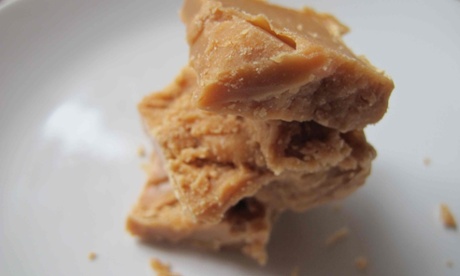
Stirring?
Fudge, like tablet, is beaten as it cools to help it thicken. Behan suggests allowing it to cool a little before doing this, but I can’t see that it makes much difference, apart from making it dangerously tempting to sample (still not a good idea, however tough you think your tongue is). Once it’s set completely, however, it’s every man for himself. I cannot be held responsible for the consequences. Add chopped nuts, dried fruit, crisp nuggets of streaky bacon … your call.
The perfect fudge
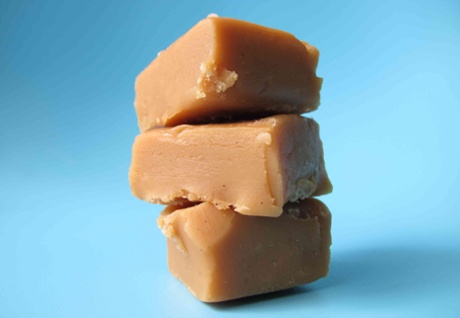
(makes 1 x 23x23cm tin)
100g butter
550g demerara sugar
200g golden syrup
350ml double cream
1 tsp vanilla extract
¼-½ tsp sea salt flakes
Melt the butter, sugar and syrup and cream in a medium, high-sided heavy-based pan, stirring until the sugar has dissolved. Line a tin about 23x23cm with greaseproof paper.
Bring to a simmer over a medium-low heat without stirring and cook, stirring occasionally until it reaches 116C, stirring more regularly after it reaches 100C and turning down the heat if it begins to catch.
Take off the heat and beat in the vanilla and salt with a wooden spoon, then continue beating until the fudge has thickened and lost its shine. Pour into the tin and leave to set.
Once it’s firmed up a little, after about an hour, slice into squares and leave to cool completely. Best kept refrigerated.
Fudge, tablet, toffee or caramel: where do your sugary loyalties lie? What’s your favourite flavour, and who makes the best you can buy?


